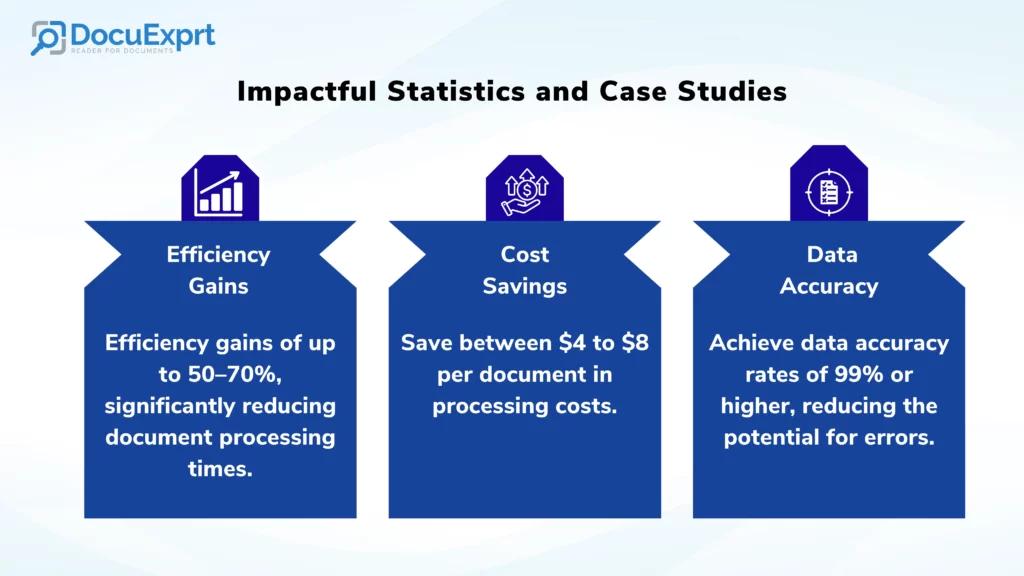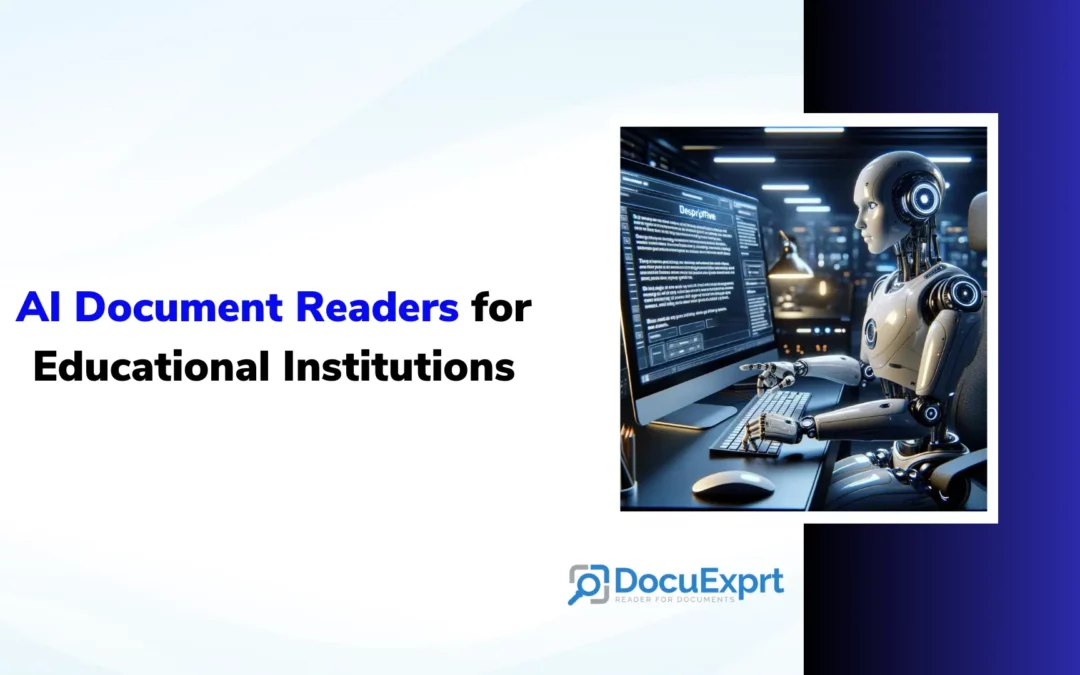Introduction
In the rapidly evolving educational sector, leveraging technology to enhance efficiency and productivity is more crucial than ever. As an educational institute, managing thousands of documents is par of the course, particularly during admissions season.
It is crucial to meticulously examine every admission document—category certificates, caste certificates, and mark sheets—to confirm students’ eligibility. Additionally, institutes must handle other documentation such as academic certificates, validation processes, and compliance documents.
This extensive document scrutiny often involves manual verification, consuming multiple man-hours. However, by integrating AI document readers into your workflow, you can save a significant amount of time and enhance overall productivity throughout the admission cycle and document review process.
Artificial intelligence (AI) document readers have emerged as a crucial tool for administrative and academic processes. This guide delves into the practicalities of integrating AI document readers into the workflows of schools, colleges, and universities, focusing on admission documents, academic certificates, and educational compliance, enriched with relevant statistics and case studies.
Understanding AI Document Readers
AI document readers utilize Optical Character Recognition (OCR), Natural Language Processing (NLP), and machine learning to interpret and manage documents digitally.
By automating the extraction of information from various document formats, these tools drastically reduce manual workload, enhance accuracy, and increase overall administrative efficiency.
Utilizing the Advanced AI Document Scrutiny Mechanism, one can effortlessly review documents such as HSC mark sheets, SSC mark sheets, or a student’s overall academic credentials. This allows for a seamless comparison between the information provided by the student in their admission form and their actual academic achievements.
The manual compilation of submitted data and the factual marks obtained by the student are significantly easier with the aid of Advanced AI Document Readers. Indeed, this technology proves invaluable in cross-referencing admission form details against the authentic information supplied by students.

Application Areas in Education
Admission Documents Processing
Admission periods are notoriously busy, with institutions sifting through thousands of applications, each accompanied by numerous documents. Education institutions need to deal with thousands of documents during admissions season. Manual verification is an error-prone and time-consuming activity.
The admission process often gets delayed due to this task of verification. The use of viable technology to improve this process is essential. The average time spent on manual document scrutiny ranges from 5 to 10 minutes per document. For an institution processing 10,000 applications annually, this equates to 1,666 to 3,333 hours spent on document processing alone.
AI document readers can significantly streamline this process by:
- Automating Data Extraction: Reducing processing time by extracting data instantly, thus improving the applicant experience.
- Enhancing Accuracy: With a manual error rate ranging between 2% and 5%, AI document readers can minimize these errors, improving operational integrity.
- Speeding up Admission Processes: Facilitating quicker processing of applications.
Academic Certificates Verification
Verifying the authenticity of academic certificates is vital for upholding academic standards. AI document readers aid by automating the verification process, reducing the manual workload by 60%, and improving the detection rate of fraudulent documents.
Managing Educational Compliance Documents
Compliance management requires meticulous documentation. AI document readers streamline regulatory document management and automate compliance checks, ensuring operations align with regulatory requirements.

Implementation Strategy
Assess Your Needs
Identify areas within your institution that would most benefit from AI document reader integration. Consider factors like paperwork volume, accuracy importance, and potential efficiency gains.
Choose the Right Tool
Select an AI document reader that fits your institution’s needs, considering compatibility with existing systems, ease of use, and customer support.
You can also analyze the feasibility of integrating this tool with your existing workflow or system to streamline the entire activity. You can go ahead with the pilot implementation to assess the cost and benefits of document verification tools.
Monitor and Optimize
Regularly review the system’s performance, gathering user feedback for ongoing optimization.
Impactful Statistics and Case Studies

- Efficiency Gains: Implementing AI document readers can lead to efficiency gains of up to 50–70%, significantly reducing document processing times.
- Cost Savings: Automation can save between $4 to $8 per document in processing costs, translating to substantial annual savings.
- Improvement in Data Accuracy: AI document readers can achieve data accuracy rates of 99% or higher, drastically reducing the potential for errors.
Integrating AI document readers into educational institutions’ workflows can significantly enhance efficiency, accuracy, and cost-effectiveness.
By carefully selecting and implementing the right tools, and preparing staff for this digital transformation, institutions can unlock the full potential of AI technologies, ultimately enriching both administrative operations and the educational experience.



